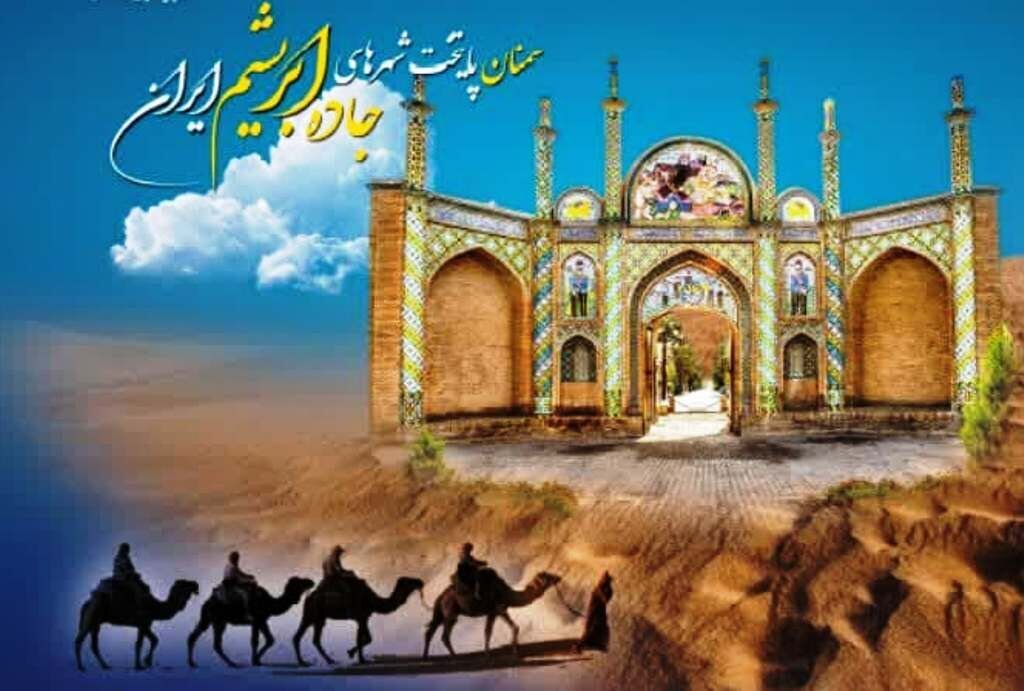Silk Road is a living cultural ecosystem, expert says

TEHRAN – The legacy of the ancient Silk Road is a living cultural ecosystem that has received special attention from UNESCO, the Director-General of the UNESCO Tehran Cluster Office for the Safeguarding of Intangible Cultural Heritage in West and Central Asia said.
Speaking at the first International Tourism Conference of Semnan, titled ‘Silk Road: Opportunities and Perspectives’, which was held at Semnan University on Wednesday, Atousa Momeni added that actions that arise from the heart of local communities contribute to the sustainability of the living heritage, IRNA reported.
She continued that the UNESCO Regional Center in Tehran is focused on networking among living heritage bearers, researchers, universities, municipalities and UNESCO families so that the exchange of experience leads to the joint policy-making.
Highlighting that the Silk Road is a way to the joint future, she said “The world that currently suffers from the disconnect between man and nature, science and life, politics and culture, needs to return to the wisdom of living along the ‘Silk Road’.”
Momeni said that the Silk Road was not just a route for trading goods, but also a route for exchanging meanings and a living bridge between the nations and cultures, in which the soul of the living heritage of humanity still flows.
She added that the Silk Road cannot be defined in the silent maps of geography, but must be seen in the living cultural ecosystem that still flows in the lives of people.
Momeni added that the Silk Road is a caravan of knowledge, beliefs, and arts that has never stopped moving and continues to be a bridge between the past and the present, and between nations and cultures. She clarified that culture is rooted in the wisdom of livelihood, the ethics of neighborhood, and peace.
She said that the Silk Road was a historical route that extended from Xi'an, China, to Samarkand and Bukhara, from Herat and Neyshabur to Tabriz, Isfahan, and Konya, and created a living connection between people, religions, and cultures.
The International Union of Tourist Cities Along the Silk Road has 40 members, half of which are Chinese cities and the other half are cities from other countries along the Silk Road, including Semnan as the only representative of Iran in this union. According to the reports, 39 Iranian cities are located on the Silk Road, with Semnan occupying the longest stretch of the Silk Road, about 600 kilometers. Numerous nationally-registered monuments along with the unique and ancient heritage of this province, which has high hopes for global registration, are another criterion for selecting this city for membership in the International Union of Tourist Cities Along the Silk Road.
Located in north-central Iran, Semnan province features a combination of desert and forest landscapes and holds historical significance as part of the ancient Silk Road.
The region’s cultural heritage and diverse geography have made it a focal point for Iran’s tourism development initiatives.
The ancient Silk Road has existed for thousands of years, passing through empires, kingdoms, reigns, and societies throughout history. At certain times in its long history, traders could travel freely along these routes, whereas at others, travel was difficult or dangerous.
According to UNESCO, the Silk Road enriched the countries it passed through, transporting cultures, religions, languages, and of course material goods into societies across Europe, Asia and Africa, and uniting them all with a common thread of cultural heritage and plural identities. There are over 40 countries today alongside the historic Land and Maritime Silk Road, all still bearing witness to the impact of these routes on their culture, traditions and customs.
Travelers along the Silk Road were fascinated not only by trade but also by the intellectual and cultural exchange that was taking place in cities along the route, many of which developed into hubs of culture and learning. Science, arts, and literature, as well as crafts and technologies, were thus shared and disseminated into societies along the lengths of these routes, and in this way, languages, religions, and cultures developed and influenced each other.
KD
Leave a Comment